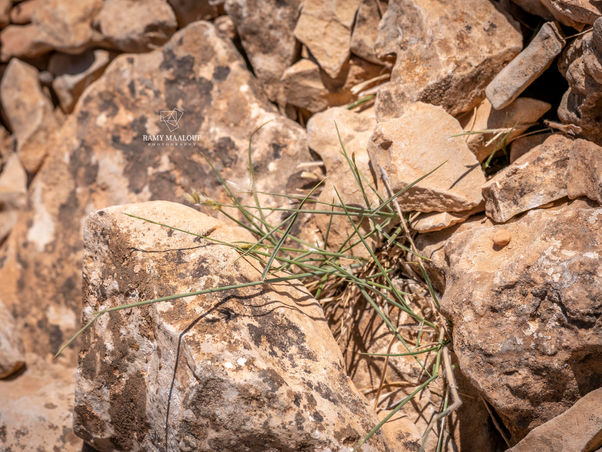Family |
Poaceae
Melica eligulata
Boiss.
Melica eligulata Boiss.
(First published in Diagn. Pl. Orient. 13: 56; 1854. Treated in Nouv. Flore du Liban et de la Syrie, vol. 1, p. 92–93, Pl. XXVII nº 2; 1966)
• Life-form & habit: Densely tufted perennial with slender, smooth, erect culms 10 – 80 cm tall; sheaths striate, glabrous; ligule extremely short or absent.
• Leaves: Blades very narrow, generally convolute except in forma planifolia Bornm., which has flat leaves c. 3 mm wide; margins scabrous.
• Inflorescence & flowers: Panicle long-pedunculate, loose, few-flowered, with erect scabrid branches. Spikelets 2-flowered; glumes greenish-violaceous, oblong-ovate, slightly unequal; lemmas of the two fertile florets oval, the lower acute, the upper obtuse; rudimentary sterile florets forming a small clavate body at the tip; anthers linear, ovary glabrous.
• Fruit: Caryopsis ellipsoid, smooth.
• Phenology: Flowers April – August.
• Habitat & elevation: Rocky slopes and open ground, from the coastal hills to mid-mountain zones.
• Lebanese distribution: Nahr Damour, Beirut, Nahr el-Kelb, Antélias, Nahr Ibrahim, Ras Chekka – Hamaté, Tripoli, Moukhtara, Jamhour, ʿAley, Ghosta, Bikfaya, Mrouj, Douma, Bcharré, Ehden; also in the Amanus and coastal Syria.
• Native range: Afghanistan, Iran, Iraq, Lebanon-Syria, Turkey (POWO).
• ⚠️ Taxonomic note: A very homogeneous species except for forma planifolia. Boissier’s original collections labelled eligulata rarely lack a ligule, suggesting that complete absence is exceptional. Morphologically close to M. minuta L., but separable by its habit and looser panicle. Its exact rank—as a good species or a subspecies of M. minuta—remains somewhat uncertain.


